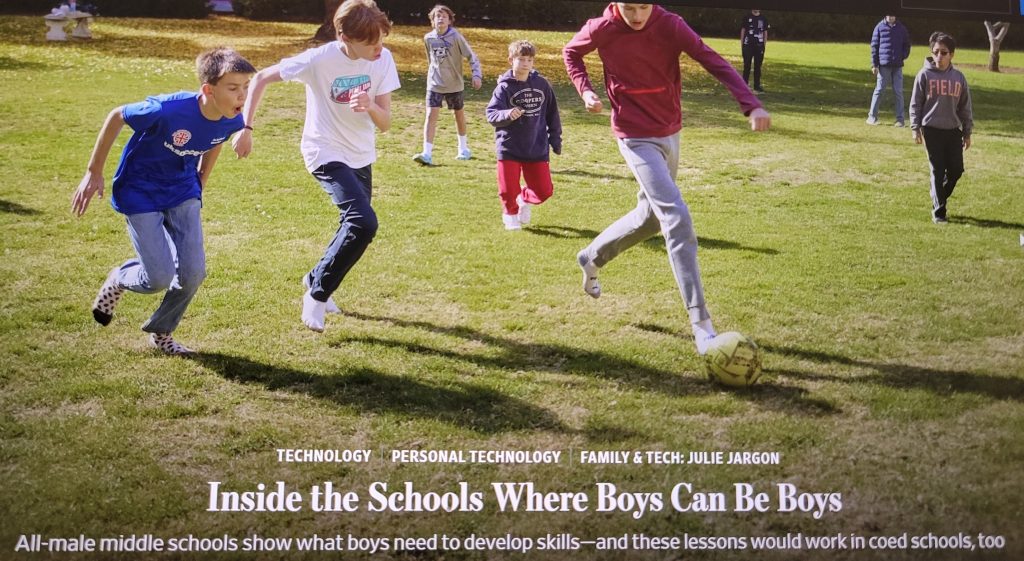color: #ea404d;
text-decoration: none;
}
.redcircle-link:hover {
color: #ea404d;
}
.redcircle-link:active {
color: #ea404d;
}
.redcircle-link:visited {
color: #ea404d;
}
Powered by RedCircle
Most schools today aren’t boy-friendly.
That’s one (big!) reason why boys lag behind girls academically. And why so many boys hate going to school.
Tyler, a 16-year-old Texas boy, started struggling in middle school. Recess was no more. Classes were 90 minutes long. So, “he found it really hard to sit still in class,” says Julie Jargon, the Wall Street Journal Family & Tech columnist who interviewed Tyler for her series on boys and education. Now a high school student, Tyler suggests that “instead of making guys change the way they behave, maybe schools should change the way they’re structured.”
Boy-friendly education practices
Movement helps humans remain alert and engaged. Simply shifting activities every 15 minutes or so can boost boys’ (and girls’) performance in the classroom. Time outside is helpful as well. Visual cues can help keep boys on track too. Boy-friendly schools also prioritize hands-on learning.
“A lot of these things that are beneficial for boys are the same for girls. It’s not that girls need something vastly different,” Julie says. “The things that benefit boys also benefit girls. You can adopt boy-friendly practices in your school without being unfriendly to girls.”
All students benefit from time to reflect on — and correct — academic, social, and behavioral mistakes. One of the all-boys schools Julie wrote about uses a restorative justice approach, she says.
“Instead of just punishing them, they give boys an opportunity to talk about it and apologize,” Julie says. That approach helps boys hone their emotional intelligence and communication skills.
In this episode, Jen, Janet, & Julie discuss:
- Why so many boys struggle in middle school
- How misunderstanding male development contributes to boys’ problems in school
- Workarounds parents use to help boys
- Boy-friendly education practices
- Pushing back against developmentally inappropriate expectations
- Single-sex vs coed schools & classes
- Support for parents of boys
Links we mentioned (or should have) in this episode:
Boys are Struggling. It Can Take Coaches, Tutors, and Thousands a Month to Fix That — WSJ article by Julie
Inside the Schools Where Boys Can Be Boys — WSJ article by Julie
Losing a Grandparent Hurts Boys at School — Scientific American article
Set Boys Up for School Success — ON BOYS episode
Boys in School Task Force –– ON BOYS episode
The Gender Equation in Schools — ON BOYS episode
Boy Moms as Boy Advocates — ON BOYS episode featuring Gemma Gaudette
Sponsor Spotlight: Winona
Menopause care made easy!
Visit bywinona.com/onboys & use code ONBOYS to get 25% your first order.
Sponsor Spotlight: Dabble & Dollop
Natural bath products for kids



